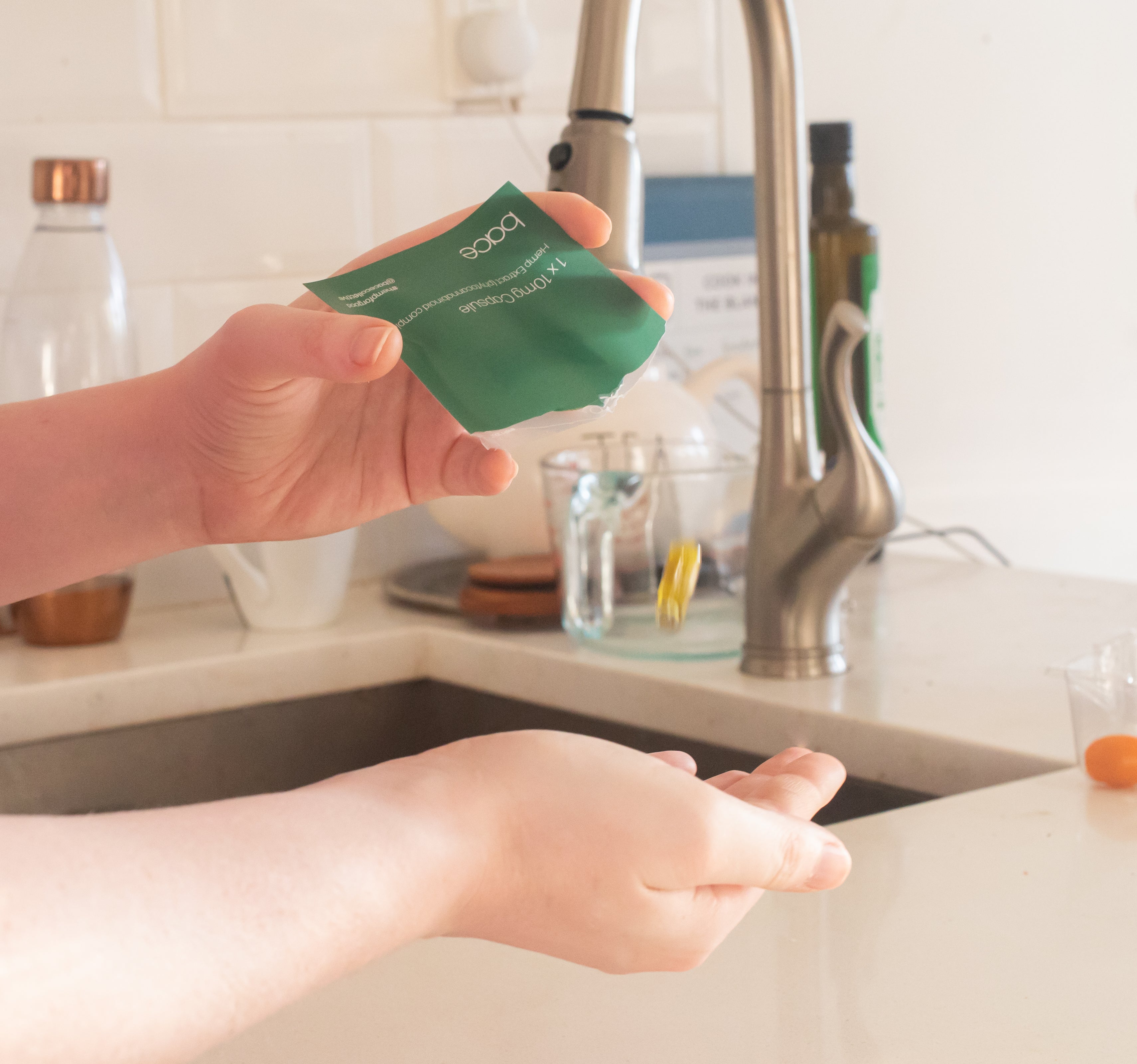Almost everyone you know today is using CBD for their overall health and wellness. So, if you’re not taking it, you have probably at least heard all about it from your friends, family, and the internet.
CBD essentially exploded onto the market over the past few years, as did the information surrounding it. Now, most of your CBD questions can be answered appropriately with a quick Google search. However, new questions arise every day, such as how long does CBD stay in your blood?
Most people who wonder this are also Googling does CBD show up on a drug test?
The short answer here is that in most cases, no, CBD does not show up on a drug test—but that’s another article for another day.
The question of how long does CBD last in your body is still a valid one, drug test or no drug test, as it’s all part of the ongoing research about the phytocannabinoid that’s making headlines left and right.
In this article, we’re going to give you a crash course in how substances like CBD are measured in the bloodstream over time to give you an idea of how long it takes your system to process it from start to finish.
Read on to learn more.
Drug Chemistry and the Half-Life Formula
When we talk about CBD or any other ingestible substance, we’re essentially talking about chemicals and chemistry.Just for the record, anything in a liquid, solid, or gas state can be classified as a chemical—even water. Therefore, when you hear the term chemical or even in some instances drug in the same sentence as CBD, it’s not something that should alarm you since it’s nothing more than simple science.
Now, chemically speaking, all reactions are measured in half-lives. Simply put, a half-life is the time it takes for the concentration of a substance to fall—or for its atoms to decay—to half the amount of its initial value.
In terms of drugs, a biological half-life refers to the time it takes for the blood levels of said drug to be physically reduced by half.
As the amount of the drug in the bloodstream reduces further, they stop halving and begin to decrease linearly, which is referred to as the zero-order elimination. In other words, a more consistent amount of the drug is eliminated per specific unit of time, independent of its concentration.
Additionally, a drug or chemical’s half-life is typically divided into what is referred to as a distribution half-life and an elimination half-life.
During the distribution phase, the blood levels will drop rather quickly. This is because the drug is moving from the bloodstream to whichever tissue it’s meant to target. The distribution phase is when the drug becomes effective.
During the elimination phase, the amount of drug that’s in the bloodstream decreases more slowly. This is because the drug is either being metabolized and broken down further in other chemicals or being excreted whole.
What Is the Half-Life of CBD?

Several studies have figured the half-life of CBD to range from 16 to 32 hours. This means that from the last time it was taken, it takes 16 to 32 hours for the elimination phase of half-lives to begin.
Now, here is where people confuse half-lives and how they work mathematically: After two half-lives have passed, an individual will have roughly a quarter as much of CBD in their bloodstream—not zero.
It’s also important to keep in mind that everyone is different in terms of their physiological makeup. Therefore, the half-life of CBD and how long it stays in your system will vary from the next person.
As mentioned above, the initial half-life cuts the amount in half during the distribution phase and then in quarters during the elimination phase. This is because the time is broken down into smaller units compared to the time it takes for the initial half-life reduction—which is contributed to the substance becoming active during the distribution phase, moving from the bloodstream to the tissues.
It’s also worth noting that the 16-32 hour window various upon several different factors, including the following:
- Dosage. The amount of CBD you take—independent of its concentration—the longer it will remain in your system.
- Frequency and tolerance. The more often you take CBD, the more of a tolerance your body will build. This affects the length of time it’ll remain in your system as it usually corresponds with the dosage.
- Method of intake. There are several ways to take CBD and your chosen method of intake will determine the rate of absorption as well as its bioavailability. For example, if you vape or take your CBD sublingually, you’ll have a higher dosage in your system as it’s absorbed directly into the bloodstream whereas edibles must bypass your metabolism before entering the bloodstream.
- Your metabolism. Your metabolic rate determines how quickly the CBD is broken down and eliminated from your system.
- How much you’ve eaten. If you take CBD on an empty stomach, whatever passes through your metabolism will be processed first. However, if you’ve eaten beforehand, the CBD will be processed more slowly.
It’s also important to keep in mind that everyone is different in terms of their physiological makeup. Therefore, the half-life of CBD and how long it stays in your system will vary from the next person.
What is the Steady State of CBD?
While the half-life helps us understand how long a chemical will last inside of the body, a similar, but different term is also used when finding the right dose for different individuals - the steady state.The steady state of a chemical is the time during which the concentration of the drug in the body stays consistent. When you first take CBD, there’s a period of time when the amount of cannabinoids present in your blood is increasing. Then, for a period of time the concentration of CBD is consistent in your blood. After that, it is metabolized through the liver and slowly leaves your body. The steady state measures that middle portion.
Why is it important? It’s important to know this for choosing the right dose (how much needs to be administered for the desired effect), and dosing interval (how often does this dose need to be administered for the desired effect), especially if you are using it on a consistent basis.
A study completed in 2018 was completed to evaluate the steady state and found that CBD reached consistent levels in the body after approximately 2 days.
Fun fact, we created the Discovery Pack in accordance to this research.
So, How Long Does CBD Last?
Most studies agree that judging by the half-life of a moderate dose of CBD (which is one to two days), we can estimate that it will take three to five days after the initial consumption for CBD to completely leave your body.However, it’s important to keep in mind that the science is not yet definitive due to the various influencing factors listed above.
For example, an older study from the early 90s examined the blood of CBD users taking high doses. The study found that it took six weeks for the CBD to diminish from their blood, and even after a week of non-use, nearly undetectable trace amounts of it remained.
So, while there’s no definitive answer, it’s safe to say that the average amount of time that CBD stays in the body is up to five days, give or take. Of course, this doesn’t mean that the effects last that long—only that the substance is still in the bloodstream.
We’ve only begun to scratch the surface of what CBD can do for our health. Understanding how long CBD lasts in the body is essential to how manufacturers and scientists alike will determine dosage and potency of CBD products in the future—to better help individuals like yourself improve their overall health and wellness.
Have more questions about CBD and what it can do for you? Visit our journal and learn more today!






